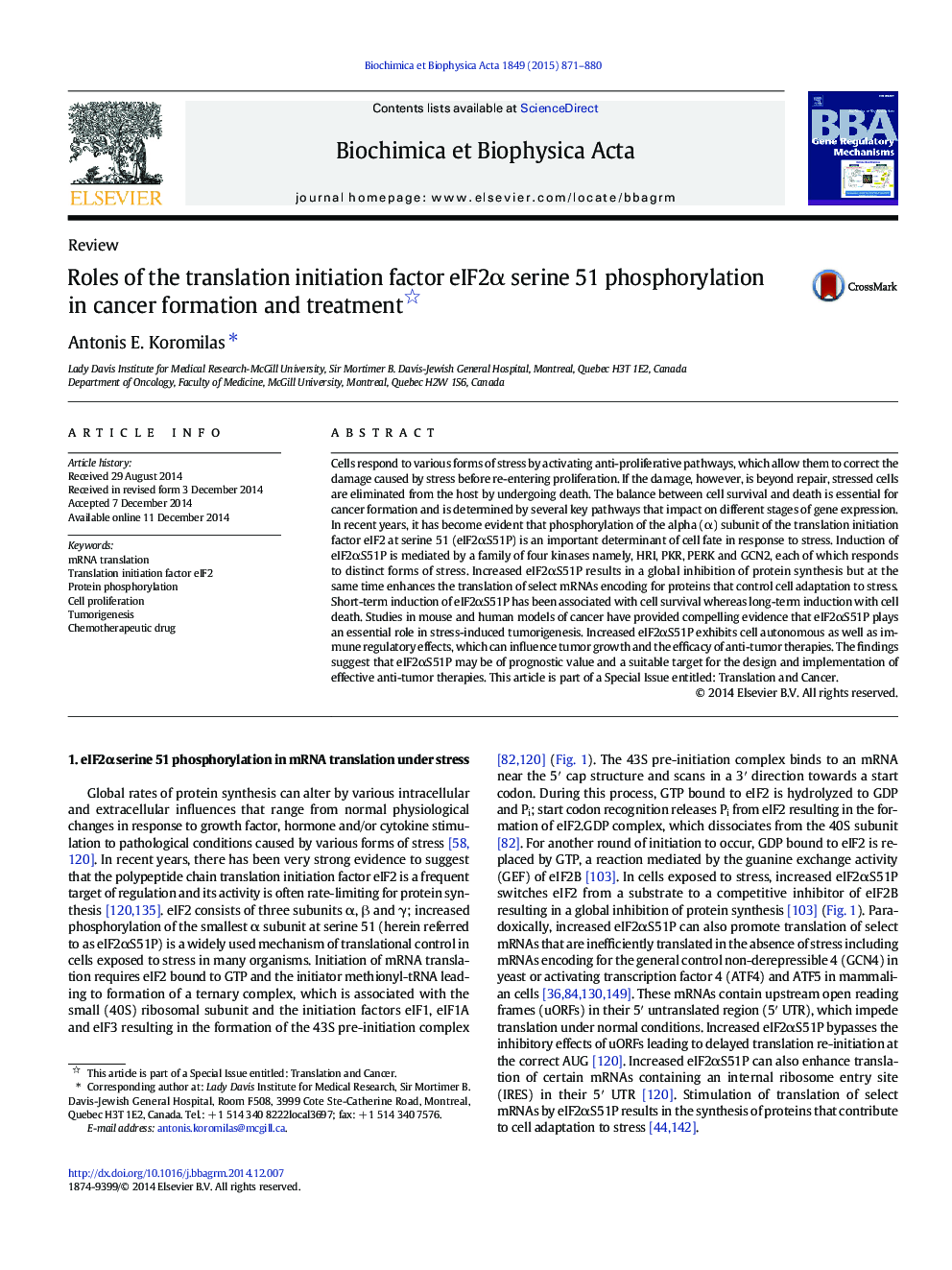| Article ID | Journal | Published Year | Pages | File Type |
|---|---|---|---|---|
| 1946407 | Biochimica et Biophysica Acta (BBA) - Gene Regulatory Mechanisms | 2015 | 10 Pages |
Abstract
Cells respond to various forms of stress by activating anti-proliferative pathways, which allow them to correct the damage caused by stress before re-entering proliferation. If the damage, however, is beyond repair, stressed cells are eliminated from the host by undergoing death. The balance between cell survival and death is essential for cancer formation and is determined by several key pathways that impact on different stages of gene expression. In recent years, it has become evident that phosphorylation of the alpha (α) subunit of the translation initiation factor eIF2 at serine 51 (eIF2αS51P) is an important determinant of cell fate in response to stress. Induction of eIF2αS51P is mediated by a family of four kinases namely, HRI, PKR, PERK and GCN2, each of which responds to distinct forms of stress. Increased eIF2αS51P results in a global inhibition of protein synthesis but at the same time enhances the translation of select mRNAs encoding for proteins that control cell adaptation to stress. Short-term induction of eIF2αS51P has been associated with cell survival whereas long-term induction with cell death. Studies in mouse and human models of cancer have provided compelling evidence that eIF2αS51P plays an essential role in stress-induced tumorigenesis. Increased eIF2αS51P exhibits cell autonomous as well as immune regulatory effects, which can influence tumor growth and the efficacy of anti-tumor therapies. The findings suggest that eIF2αS51P may be of prognostic value and a suitable target for the design and implementation of effective anti-tumor therapies. This article is part of a Special Issue entitled: Translation and Cancer.
Keywords
Related Topics
Life Sciences
Biochemistry, Genetics and Molecular Biology
Biochemistry
Authors
Antonis E. Koromilas,
